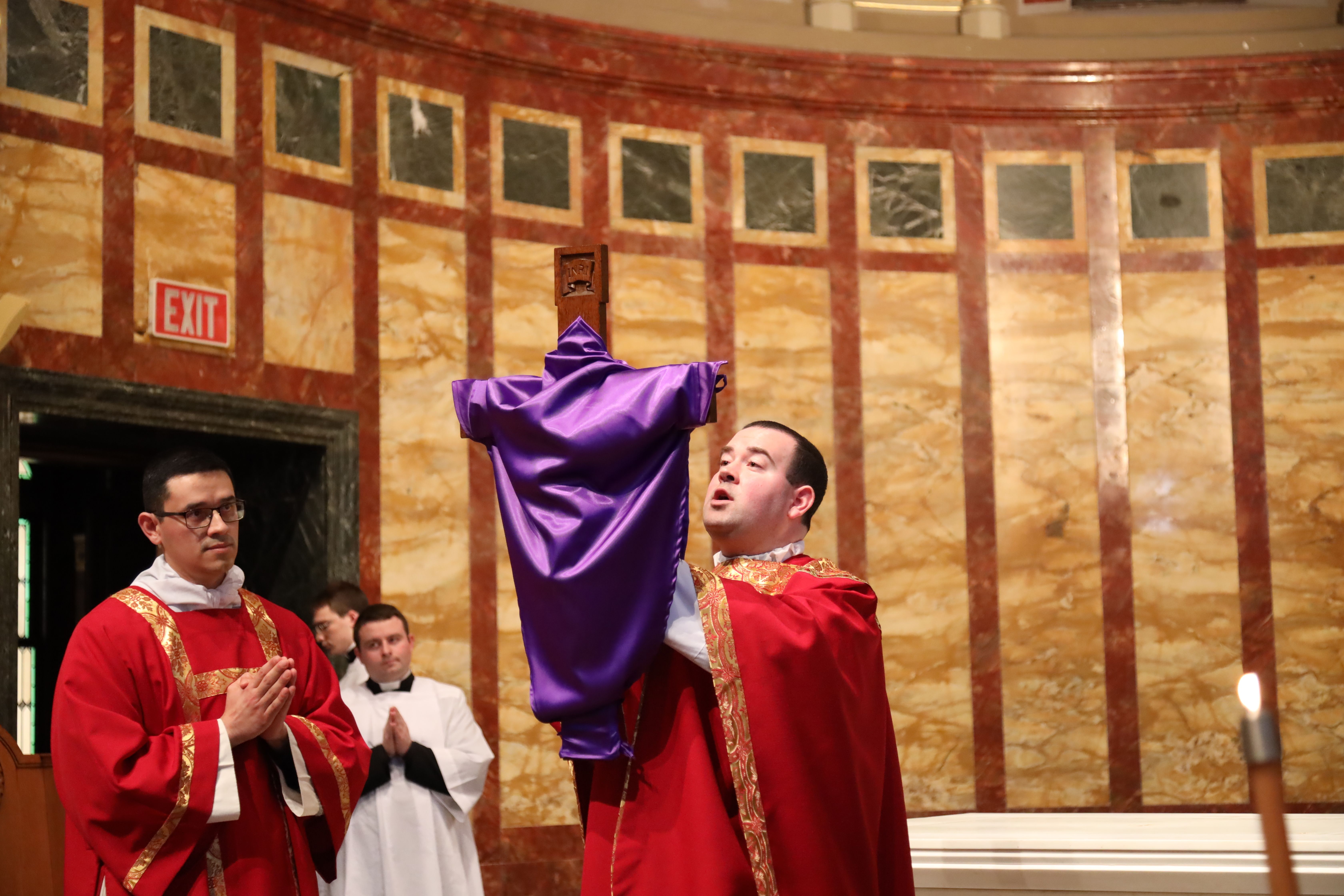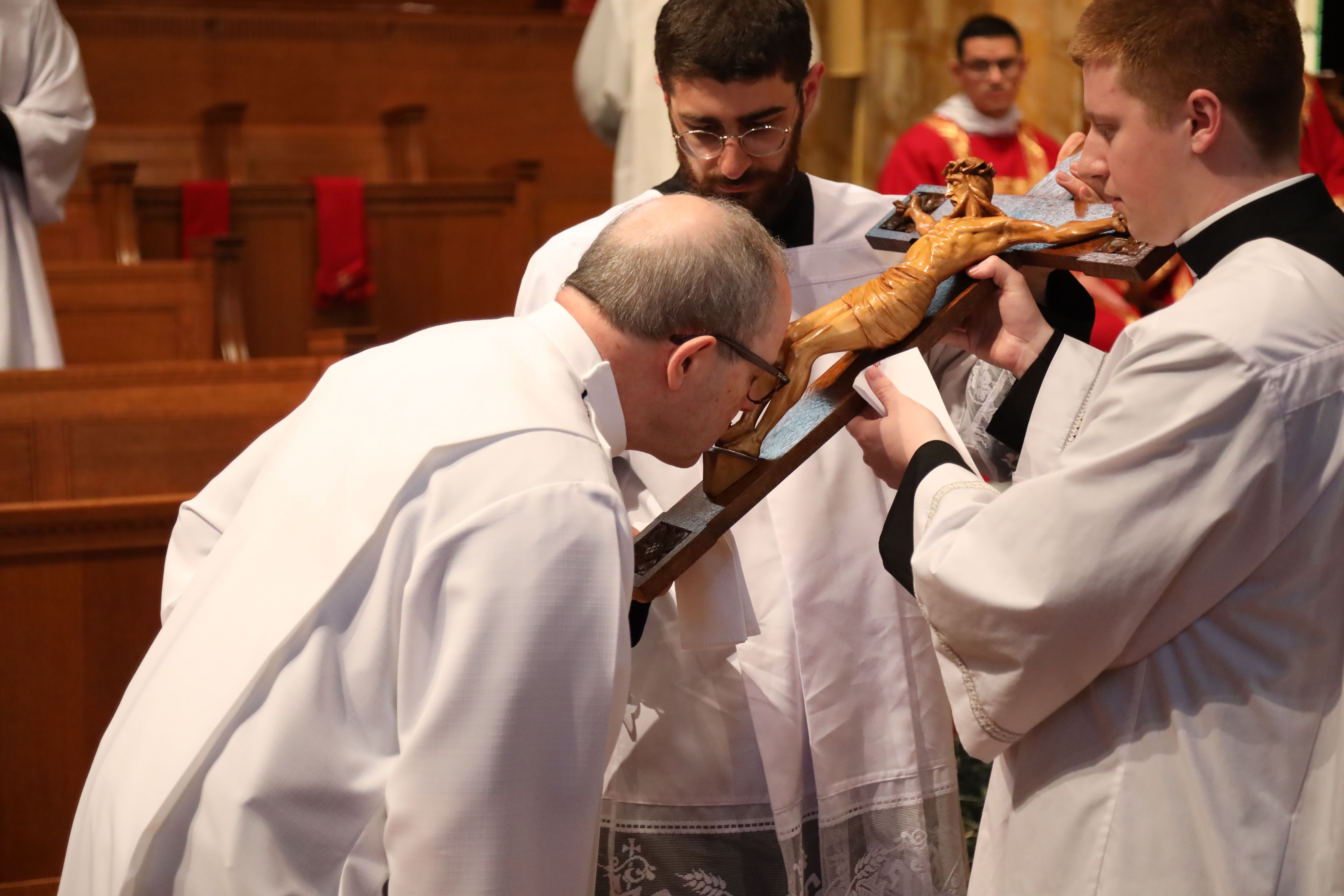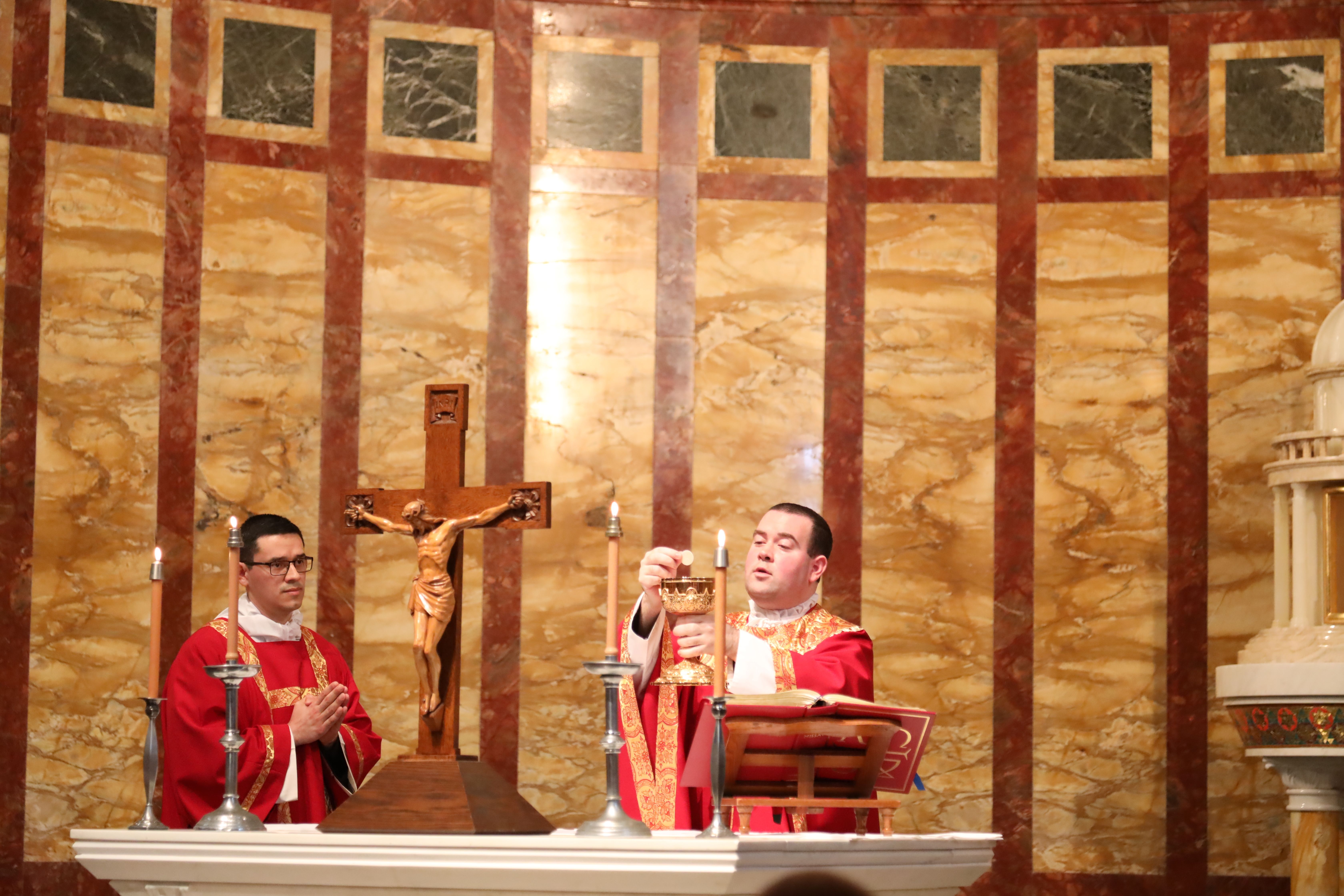The Celebration of the Lord’s Passion: A Solemn Encounter with the Cross
The Good Friday liturgy, known as the Celebration of the Lord’s Passion, is the second movement of the Paschal Triduum—the “Great Three Days”—and the only day in the Church year when the Mass is not celebrated. Instead, the faithful gather in silence and solemn reflection on Christ’s suffering and death, entering deeply into the mystery of the Cross.
This liturgy is marked by three distinct parts: the Liturgy of the Word, the Veneration of the Cross, and Holy Communion.

Liturgy of the Word
The service begins in silence, with the priest lying prostrate before the altar, signifying the Church’s mourning. The readings include the haunting Suffering Servant passage from Isaiah, the Letter to the Hebrews, and the solemn proclamation of the Passion according to John. These readings draw us into the depth of Christ’s love and His willing sacrifice for the salvation of the world.
The Solemn Intercessions
Following the homily, the Church offers a series of ancient and universal prayers—for the Church, for the Pope, for those in need, and for the world. These Solemn Intercessions reflect the breadth of Christ’s redemptive act, encompassing all humanity.
Veneration of the Cross
At the heart of the liturgy is the Veneration of the Cross. A veiled cross is slowly unveiled as the priest proclaims: “Behold the wood of the Cross, on which hung the salvation of the world.” The faithful come forward to kneel, touch, or kiss the Cross in an intimate and reverent expression of love and gratitude for Christ’s sacrifice.

Holy Communion
Although no Mass is offered on Good Friday, Holy Communion is distributed using the hosts consecrated at the Holy Thursday Mass. The absence of the Eucharistic Prayer and Consecration emphasizes the solemnity and incompleteness of this day—a liturgy suspended in grief, waiting for the Resurrection.
The Celebration of the Lord’s Passion ends in silence. No final blessing is given, and the faithful depart quietly, continuing the watch begun the night before. The liturgy leaves the Church in a moment of holy pause, immersed in sorrow yet poised for hope—awaiting the light of the Easter Vigil.


